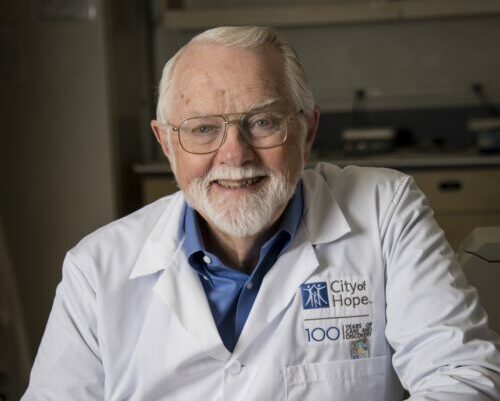Arthur Riggs, a world-renowned diabetes expert who developed the technology that led to the first human synthetic insulin and who became a major donor to Duarte-based City of Hope, died March 23 at age 82 after battling cancer, the nonprofit announced.
A biotechnology pioneer and a longtime research leader at City of Hope, Riggs served as director emeritus of Beckman Research Institute and the Arthur Riggs Diabetes & Metabolism Research Institute at City of Hope.
Last year, he publicly gave $100 million to City of Hope, at which time the diabetes research center there was renamed in his honor. That followed years of donations made quietly behind the scenes that totaled $210 million, bringing his overall donation total of $310 million. He was by far the most prodigious donor in City of Hope’s 109-year history.
Riggs’ major scientific discoveries were achieved over more than a half-century of research, paving the way for development of the monoclonal antibody therapies that are the foundation of modern treatments for cancer, autoimmune diseases, blindness and a host of other diseases. His breakthrough work in diabetes enabled mass production of insulin for people living with the disease. Today, synthetic insulin is used by hundreds of millions of people.
Riggs was already recognized for his novel research into the inner workings of DNA when he joined City of Hope as a research scientist in 1969. In 1977, his research led to the creation of the first artificially synthesized gene and human protein, the important hormone inhibitor somatostatin, followed not long after by the first-ever synthesis of human growth hormone. A year later, he was able to apply this technology to produce human insulin from bacteria.
“We chose insulin because it looked doable, and there was a need,” Riggs said in a Business Journal interview last year. “At the time, diabetics were being treated with cow insulin because there was no source of human insulin. And cow insulin resulted in a high rate of allergic reactions.”
As a scientist and leader at City of Hope over the next 53 years, Riggs continued to perform groundbreaking research and make major contributions across the life sciences. His 1975 paper on mammalian epigenetics — how behaviors and environment can cause changes that affect the way genes work — remains one of the most frequently referenced on the subject.
Throughout his long research career, he authored more than 200 scholarly papers and amassed 20 patents. He was recognized for this lifetime of achievements by his election to the National Academy of Sciences in 2006.
“Arthur Riggs is one of the scientific giants of the age and should be a household name for his contributions to diabetes alone,” Robert Stone, City of Hope’s chief executive, said in the announcement of Riggs’ death. “His research also led to the development of monoclonal antibody therapies that today treat cancer and other diseases.”
Riggs continued his research efforts at City of Hope until just a few months before he died.
“I could have retired into a South Pacific mansion and enjoyed myself on the beach, but I would have been bored within a week,” he said in the Business Journal interview. “I’m going to keep going as long as I can. There is such a need for diabetes research and treatment; diabetes is an epidemic, and it is becoming a huge problem for world health.”

